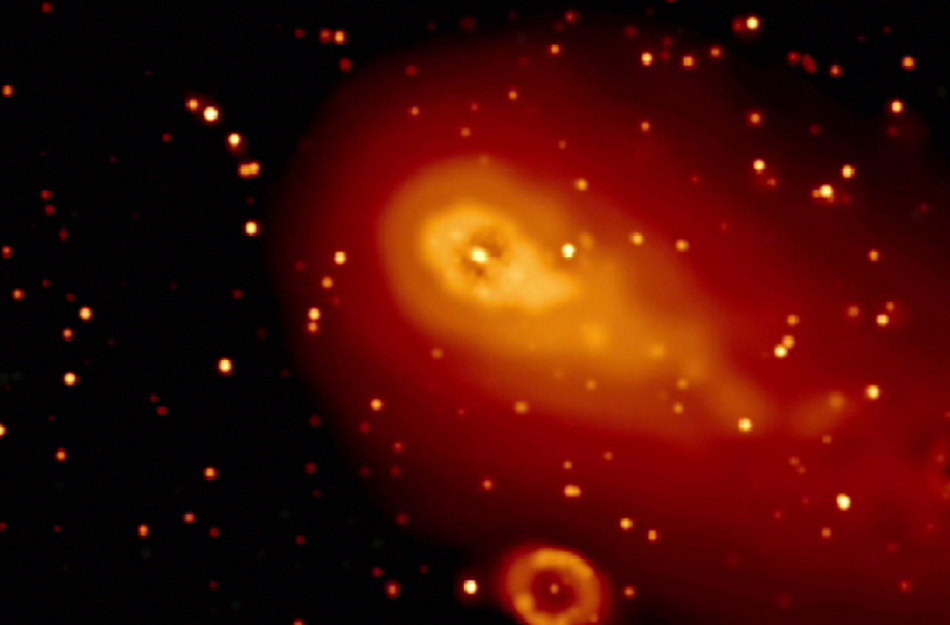
 Credit: NASA/Swift/Stefan Immler and Dennis Bodewits
Credit: NASA/Swift/Stefan Immler and Dennis Bodewits
Charge and Exchange
Even though comets are basically giant dirty snowballs, a few years ago they surprised astronomers by emitting X-radiation. These X-rays are not produced by multi-million degree gas (as is often the case) but rather by a process called "charge exchange". In this process, ionized atoms (which have lost one or more electrons) which are carried within the solar wind collide with neutral atoms in the comet's coma. The solar wind ion can collide with and capture an electron from the neutral comet atom, and in doing so some of the energy of the collision is observed in the form of X-rays. This produces a glow of X-rays on the sunward side of the comet's atmosphere. Charge exchange can occur in a variety of astrophysical settings, and cometary charge exchange provides astronomers a means to study this process up close. The image above is a pretty picture of comet 73P/Schwassmann-Wachmann 3 passing by the Ring Nebula. This image was obtained by the ultraviolet and optical telescope (UVOT) on the Swift gamma-ray burst hunter. The UVOT observations help astronomers to study the structure and chemistry of the comet, while Swift's X-ray Telescope (XRT) simultaneously monitors the charge exchange process. Comet 73P/Schwassmann-Wachmann 3 is currently in the process of breaking up, and the UVOT observations show important details of how this breakup is occurring.
Published: December 15, 2008
<
HEA Dictionary ● Archive
● Search HEAPOW
● Other Languages
● HEAPOW on Facebook
● Download all Images
● Education ● HEAD
>
Each week the HEASARC
brings you new, exciting and beautiful images from X-ray and Gamma ray
astronomy. Check back each week and be sure to check out the HEAPOW archive!
Page Author: Dr. Michael F. Corcoran
Last modified Tuesday, 27-Feb-2024 10:08:24 EST


